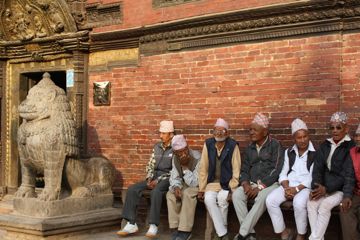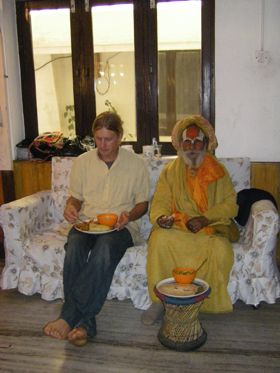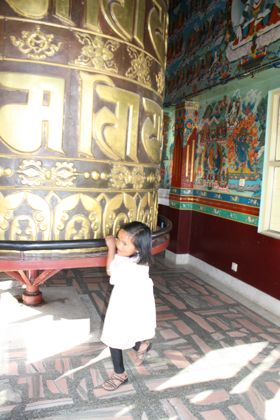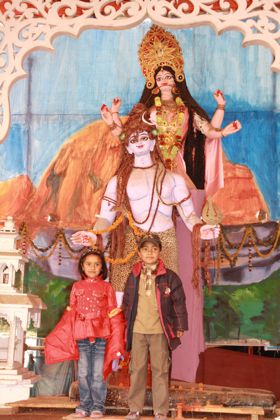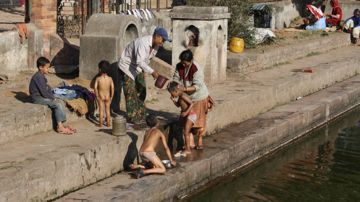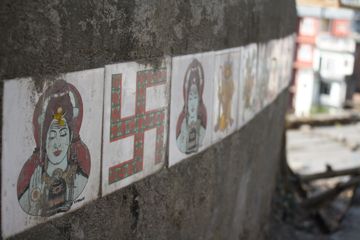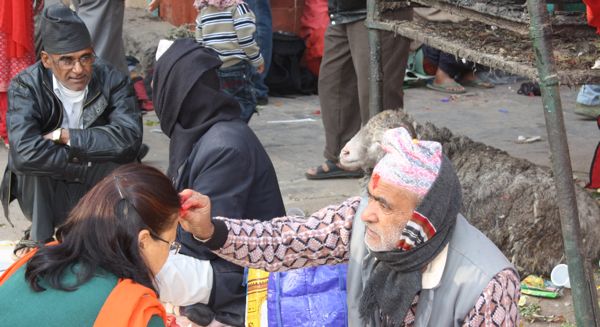
A worshiper being blessed. Note the sheep. All photos by Sarah Vazquez.
From the moment you step off the plane in Kathmandu, you will notice several obvious cultural differences from your home in the Western world.
Perhaps these tips will leave you a little less jolted during your first few days in Nepal, and a little more prepared to dive into a new culture!
